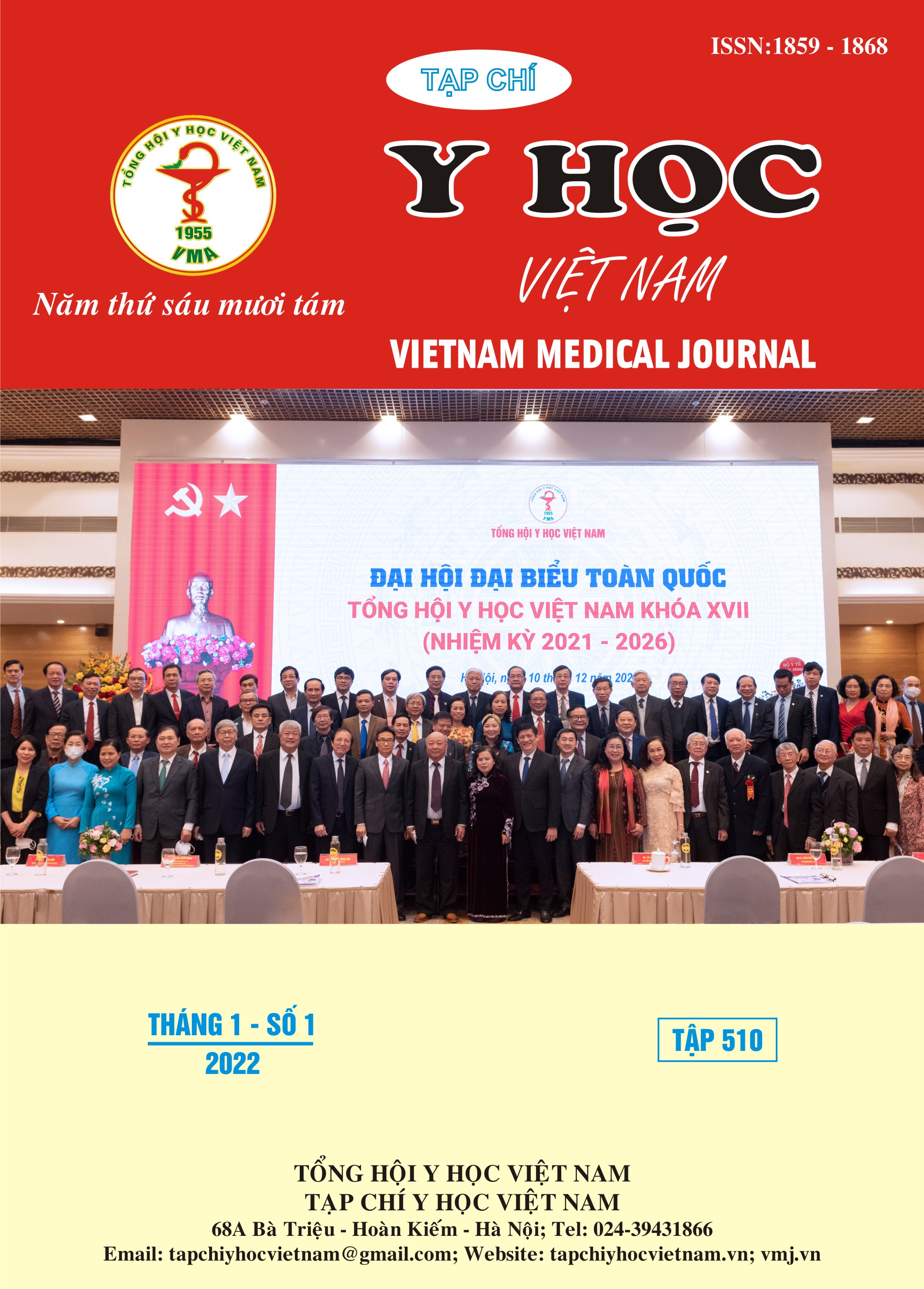ASSESSMENT OF MOTOR REHABILITATION OUTCOMES AND QUALITY OF LIFE OF FEMORAL NECK FRACTURE PATIENTS AFTER PARTIAL HIP REPLACEMENT SURGERY AT AN GIANG CENTRAL GENERAL HOSPITAL IN 2020-2021
Main Article Content
Abstract
Introduction: Fractures of the femoral neck are common in the elderly, partial hip replacement is a commonly used treatment. Objective: Assessment of motor rehabilitation outcomes, quality of life and some related factors. Study subject and methodology: Cross-sectional study on 84 elderly patients of partial hip replacement. Results: For patients with good and very good motor rehabilitation, motor function gradually increased by 1.2% within 1 month, 41.6% within 3 months, and 75% within 6 months, contrary to outcomes of patients with medium low motor rehabilitation with motor function decreasing from 98% within 1 month to 58.39% within 3 months and 24.79% in the sixth month. Good and very good outcome was commonly found in female, 60-69 years old with accompanying underlying conditions, Garden 3,4. Good and fairly good life quality assessment scoring result increased at 1 month (0%), 3 months (2.4%), and 6 months (47.6%). Good and fairly good life quality result was commonly found in female patients, <70 years old with accompanying underlying conditions, Garden 3,4. Conclusion: Partial hip replacement helps recover motor function and improves life quality.
Article Details
Keywords
femoral neck fracture, partial hip replacement, motor rehabilitation, life quality
References
2. Nguyễn Văn Khanh, (2019), Nghiên cứu đặc điểm lâm sàng, cận lâm sàng, nguyên nhân và đánh giá kết quả điều trị gãy cổ xương đùi bằng thay khớp háng bán phần tại Bệnh viện Trường Đại học Y Dược Cần Thơ năm 2018-2019, Luận án chuyên khoa cấp 2, Đại học Y dược Cần Thơ.
3. Nguyễn Tường Quang (2012), Đánh giá kết quả phẫu thuật thay khớp hàng bán phần lưỡng cực điều trị gãy mới cổ xương đùi do chấn thương ở bệnh nhân cao tuổi, Luận án chuyên khoa cấp 2, Đại học Y dược TPHCM.
4. Trần Quang Sơn, (2017), Nghiên cứu đặc điểm lâm sàng, cận lâm sàng và đánh giá kết quả điều trị gãy cổ xương đùi ở người cao tuổi bằng phẫu thuật thay khớp háng bán phần không xi măng tại Bệnh viện Trường Đại học Y Dược Cần Thơ, Luận văn bác sĩ nội trú, Trường Đại học Y Dược Cần Thơ.
5. WHO (1998), The World Health Organization Quality of Life Assessment (WHOQOL): Development and general psychometric properties. Soc Sci Med. 46(12), pp 1569-1585.
6. Ware J E, Jr. and Sherbourne C D (1992), The MOS 36- item short-form health survey (SF-36). I Conceptual framework and item selection. Med Care. 30(6), pp 473-483
7. Han S K, Song H S, Kim R, Kang S H, (2016), “Clinical results of treatment of garden type 1 and 2 femoral neck fractures in patients over 70-year old”, Eur J Trauma Emerg Surg, 42 (2), pp. 191-196.
8. Mellner C, Eisler T, Knutsson B, Mukka S, (2017), “Early periprosthetic joint infection and debridement, antibiotics and implant retention in arthroplasty for femoral neck fracture”, Hip Int, 27 (4), pp. 349-353.


